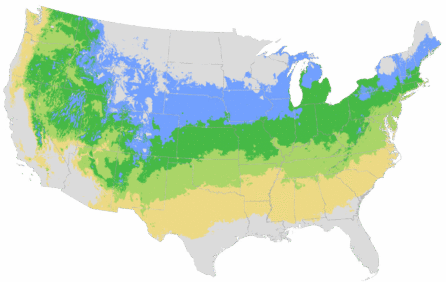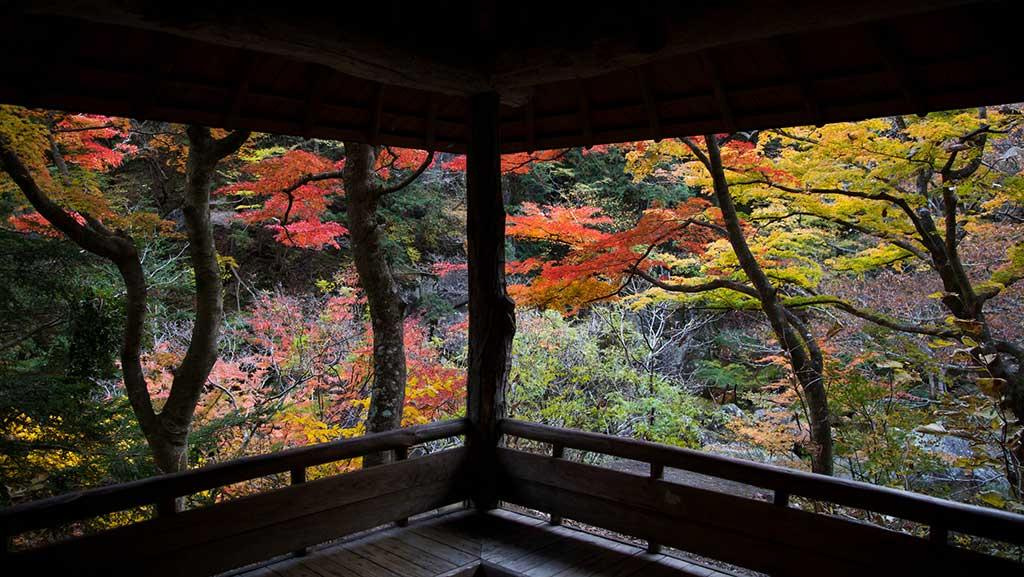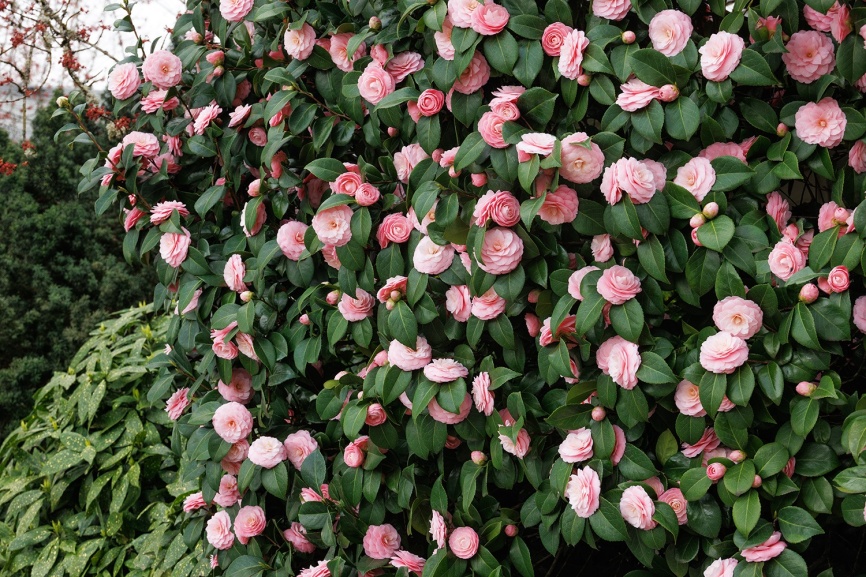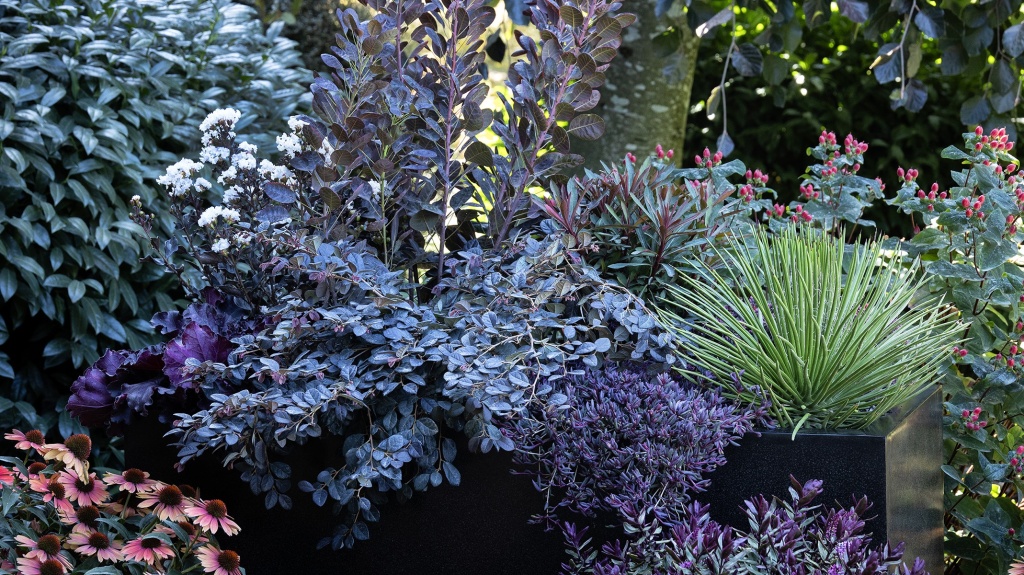You're growing in this Zip Code:
Change LocationDiscover Plants for Your Area
Constellation® Dogwood
Cornus x 'Rutcan'
Retailers Near You
| Description | An impressive, small but vigorous tree with full branching from bottom to top with lush green foliage and a profusion of large, white, flower-like bracts that appear in late spring to early summer. A stellar landscape specimen for small gardens or woodland settings. Highly disease resistant. A sterile cultivar that produces no fruit. Deciduous. |
|---|---|
| Bloom Time | Late spring to early summer |
| Deciduous/Evergreen | Deciduous |
| Special Features | Easy Care, Fall Color, Improved Pest and Disease Resistance |
| Growth Rate | Moderate |
| Growth Habit | Pyramidal |
| Flower Attributes | Showy Flowers |
| Patent Act | Asexual reproduction of plants protected by the Plant Patent Act is prohibited during the life of the patent. |
| Landscape Use | Privacy Screen |
| Design Ideas | An elegant accent tree for high profile front yard whether planted in lawns or in beds with more diverse underplanting. Makes a divine focal point in backyard landscape and will draw the eye from a distance. Equally good for shade and interest up close beside porch, patio or terrace. Plant trees perfectly aligned with picture windows or sliding glass door to enjoy its seasonal changes from indoors. One of the best for adding midlevel interest beneath canopies of giant old shade trees. Set into a woodland composition to ease the transition to wildland and to provide more diversity to the understory. |
| Flower Color | White |
| Foliage Color | Green |
| Foliage Fall Color | Red |
| Companion Plants | Witch Hazel (Hamamelis); Snowberry (Symphoricarpos); Redbud (Cercis); Oak Leaf Hydrangea (Hydrangea); Oregon Grape Holly (Mahonia) |
| Care Instructions | Provide enriched, moist, well-drained, acidic soil. Apply a thick layer of mulch to keep root zone cool in summer. Protect from harsh sun in hot regions. Water deeply, regularly during first growing season to establish root system; once established, prefers moist soil, but tolerates mild drought. Feed in early spring. Prune in winter to shape. |
| History | In the late 20th century a disease struck Cornus florida both in culivation and in the wild causing the death of millions of trees in North American. Breeding efforts by Dr. Elwin Orton of Rutgers University resulted in the Rutgers Stellar Series dogwoods considered highly resistant to dogwood borer and moderately to highly resistant to dogwood anthracnose. The trees are a cross between C. florida, a native of the American southeastern states and C. kousa, the Japanese dogwood. The Stellar series blooms slightly later and lacks fruit. |
| Lore | Eastern American agricultural tribes used the blooming of the dogwood to signal the time to plant corn. They made tea of dogwood bark was used to break a fever, and this same remedy led to its use again during the Civil War. With southern ports blockaded, Confederates were without quinine for malaria and found the dogwood remedy a suitable alternative. The wood of these trees is exceptionally hard and used for making high-stress tools. |
| Description | An impressive, small but vigorous tree with full branching from bottom to top with lush green foliage and a profusion of large, white, flower-like bracts that appear in late spring to early summer. A stellar landscape specimen for small gardens or woodland settings. Highly disease resistant. A sterile cultivar that produces no fruit. Deciduous. |
|---|---|
| Bloom Time | Late spring to early summer |
| Deciduous/Evergreen | Deciduous |
| Special Features | Easy Care, Fall Color, Improved Pest and Disease Resistance |
| Growth Rate | Moderate |
| Growth Habit | Pyramidal |
| Flower Attributes | Showy Flowers |
| Patent Act | Asexual reproduction of plants protected by the Plant Patent Act is prohibited during the life of the patent. |
| Landscape Use | Privacy Screen |
|---|---|
| Design Ideas | An elegant accent tree for high profile front yard whether planted in lawns or in beds with more diverse underplanting. Makes a divine focal point in backyard landscape and will draw the eye from a distance. Equally good for shade and interest up close beside porch, patio or terrace. Plant trees perfectly aligned with picture windows or sliding glass door to enjoy its seasonal changes from indoors. One of the best for adding midlevel interest beneath canopies of giant old shade trees. Set into a woodland composition to ease the transition to wildland and to provide more diversity to the understory. |
| Flower Color | White |
| Foliage Color | Green |
| Foliage Fall Color | Red |
| Companion Plants | Witch Hazel (Hamamelis); Snowberry (Symphoricarpos); Redbud (Cercis); Oak Leaf Hydrangea (Hydrangea); Oregon Grape Holly (Mahonia) |
| Care Instructions | Provide enriched, moist, well-drained, acidic soil. Apply a thick layer of mulch to keep root zone cool in summer. Protect from harsh sun in hot regions. Water deeply, regularly during first growing season to establish root system; once established, prefers moist soil, but tolerates mild drought. Feed in early spring. Prune in winter to shape. |
|---|
| History | In the late 20th century a disease struck Cornus florida both in culivation and in the wild causing the death of millions of trees in North American. Breeding efforts by Dr. Elwin Orton of Rutgers University resulted in the Rutgers Stellar Series dogwoods considered highly resistant to dogwood borer and moderately to highly resistant to dogwood anthracnose. The trees are a cross between C. florida, a native of the American southeastern states and C. kousa, the Japanese dogwood. The Stellar series blooms slightly later and lacks fruit. |
|---|---|
| Lore | Eastern American agricultural tribes used the blooming of the dogwood to signal the time to plant corn. They made tea of dogwood bark was used to break a fever, and this same remedy led to its use again during the Civil War. With southern ports blockaded, Confederates were without quinine for malaria and found the dogwood remedy a suitable alternative. The wood of these trees is exceptionally hard and used for making high-stress tools. |
Retailers Near You
About Us
We have been pioneers and craftsmen in the art of growing plants for nearly
100 years. Since our founding in Southern California by Harry E. Rosedale, Sr.
in 1926, we have been absolutely dedicated and obsessed with quality.
We have been pioneers and craftsmen in the art of growing plants for nearly 100 years. Since our founding in Southern California by Harry E. Rosedale, Sr. in 1926, we have been absolutely dedicated and obsessed with quality.








